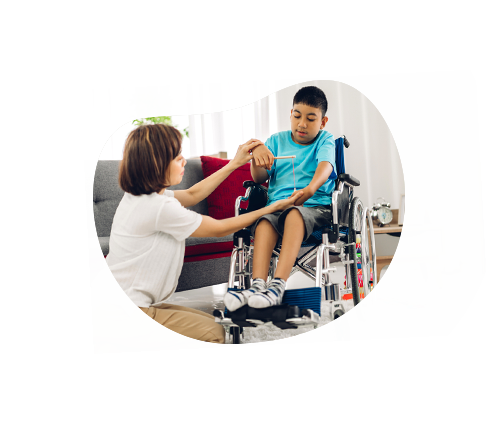







Developmental disorders typically appear before children start learning. They are defined by deficiencies that delay their ability to operate personally, socially, academically, or professionally. The abilities and attitudes of children with developmental problems can be effectively helped by pedagogical intervention. The continuous improvement of sensory and motor abilities is a sign of the manner in which their brain matures. But the level of their development cannot necessarily correspond to their actual age. For instance, a genetic abnormality can make it difficult for children to learn certain skills. Sensory and motor development is a very significant part of their life. One system is unable to function without the other. The five senses of sight, touch, taste, smell, and hearing help children develop different sensory awareness, and laying a strong foundation is essential before moving on to higher learning. In order to determine whether children are developing adequately for their age as they become older, it is crucial that their Sensory and Motor Skill Development takes place normally.
Sensory processing problems are common in disabled children. Developmental delays and fine motor skills deficits can result from sensory processing issues. Children learn to use and coordinate their arms, hands, legs, and trunk muscles during the process of sensory and motor development. They also begin to experience the environment through sight, sound, smell, taste, and hearing.
In their environment, it promotes children's growth, development, and learning. Sensory and motor stimulation and responses are interlinked. Both are necessary for the other to exist.
Brain connections play a critical role in learning. It supports the growth of motor skills. It allows the production of language and promotes problem-solving and scientific thinking. Children with learning or behavioral issues frequently have underdeveloped sensory and motor systems. The brain is operated by the motor system, which also causes sensory stimulation and output. These abilities advance and grow in order to support behavior and educational knowledge.
Children are given periodic motor intervals throughout the day by their instructors, not just during physical education or recess. The ideal solution is to take a brain break every few hours. Yoga is one of several methods used in the educational setting to promote gross motor skills.
The purpose of sensory play is to assist children in improving their verbal and motor abilities. Additionally, it facilitates social connection, cognitive development, and experimentation.
Throughout the early years of a child, motor development is crucial because physical development is linked to other aspects of development. For example, having gross motor abilities like the ability to crawl or walk makes it easier for them to explore their physical surroundings, which influences cognitive growth.
Children play in order to develop control, strength, and accuracy in their hands and fingers because play for them is like their work. Once children leave their learning environment or a therapy session, the development of their fine motor skills should not slow down. The introduction of play is conducive to achieving significant milestones. They are encouraged to use their thumb and index finger while fiddling with their toys. Playing board games that involve moving and connecting a couple or more pieces, rolling dice cups, and pressing with their fingers, can help them develop their motor skills. Similarly, the preparation of certain dishes that they are familiar with can also stimulate their sensory and motor skill development. Playdough, painting, playing with sponges, water play, and gardening and planting are other ways in which children can develop fine sensory and motor skills.
Children can daily develop their sensory-motor abilities through fun play-based activities. Various activities provide sensory stimulation. Jumping, playing catch, walking on nature walks, and looking for objects hidden in sensory-stimulating boxes are all examples of activities for fine-motor play. Having fun with food, creating pictures with it, and making funny faces with the help of eggshells, lemons, and tomatoes allow children to experience various types of touch. Playing with torches to search for lost items improves their visual power and attentiveness.
The main goal of our dedicated Education Trust is to help disabled children learn cognitive, physical, sensory, and motor skills. This is because many of them have difficulty communicating socially and suffer from underdeveloped sensory and motor development. We support or enhance our highly effective program in multiple ways. Some of the activities we offer to develop their skills and abilities include yoga, exercise, and art and craft.
Physical education enrollment is lower among special education learners since gross motor abilities and social skills are frequently delayed in special education children leading them to be at a higher risk of developing obesity and related health problems. Therefore, we have created useful techniques to engage and motivate all of these learners.
Sensory and motor engagement is the cornerstone of a child’s growth, development, and learning. Motor control and sensory stimulation are intricately intertwined. Understanding disabled children frequently misbehave and have undeveloped sensorimotor, motor, and motor systems. So, to assist with behavior and academic development, these skills are developed and strengthened here.


